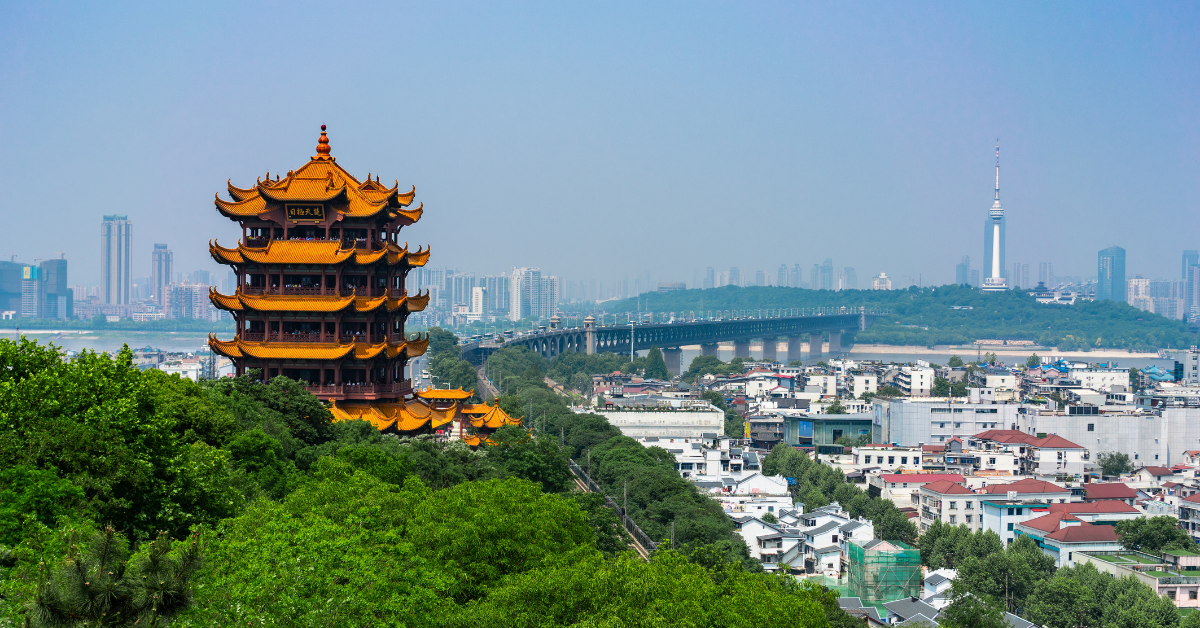Wuhan is a major city in inland China, seen by Japanese people as a historical stage and a center of culture and economy. In recent years, however, it has also drawn special attention due to the pandemic. This article organizes the multifaceted images Japanese people have of Wuhan and explains them in a way that is easy for foreigners to understand.
The Historical Image of Wuhan Among Japanese People
Wuhan is an indispensable city when discussing modern Chinese history. In particular, the Wuchang Uprising of 1911 during the Xinhai Revolution shook the Qing Dynasty and greatly changed the history of Asia. This event is taught in Japanese history education, so many Japanese recognize Wuhan as the “birthplace of the Chinese revolution.”
In addition, being located along the midstream of the Yangtze River, Wuhan developed as a logistics hub and was sometimes referred to as the “seaport of the interior.” During World War II, the Japanese army temporarily occupied Wuhan, leaving a lingering image of the city as being associated with war.
Thus, Wuhan is both a symbol of innovation and a reminder of wartime history, giving Japanese people a complex perception of the city.
The Cultural Image of Wuhan Among Japanese People
Wuhan is made up of three towns known as Hankou, Hanyang, and Wuchang, each with unique characteristics. For Japanese travelers, Wuhan is strongly associated with local food culture, especially hot dry noodles (re gan mian), which leave a memorable impression. Moreover, Hubei Province is the center of Chu culture, so for Japanese people interested in literature and classical history, Wuhan is seen as a “treasure house of ancient culture.”
Additionally, the cherry blossom trees at Wuhan University are a popular attraction for Japanese tourists, creating the impression of Wuhan as a Chinese city where cherry blossoms can be enjoyed.
This can be summarized as follows:
| Field | Positive Impressions | Negative Impressions |
|---|---|---|
| Food culture | Hot dry noodles and diverse street food | Limited recognition in Japan |
| Traditional culture | Chu culture, Qu Yuan, classical literature | Unfamiliar to many Japanese |
| Tourism | Cherry blossoms, Yellow Crane Tower, East Lake | Less tourist promotion compared to other cities |
The Economic Image of Wuhan Among Japanese People
Wuhan is strongly perceived as the “economic center of inland China.” It has strengths in industries such as automobiles, steel, and optical communication, with many Japanese companies operating there. The Wuhan Economic and Technological Development Zone is home to numerous Japanese factories, making it seen by Japanese businesspeople as a “gateway to the Chinese market.”
Furthermore, in addition to the Yangtze River’s shipping routes, the China-Europe freight train (China-Europe Railway Express) connects Wuhan directly with Europe, reinforcing its role as a “core of the overland Silk Road.”
| Field | Positive Evaluation | Negative Evaluation |
|---|---|---|
| Industry | Development of automobiles, steel, and heavy industry | Concerns about pollution and environmental burden |
| International logistics | China-Europe Railway, Yangtze River transport | Less globally known compared to coastal cities |
| Japan relations | Japanese companies and expats in Wuhan | Limited public awareness in Japan |
The Image of Wuhan After the New Infectious Disease
The outbreak of the new infectious disease in 2020 significantly changed the way Japanese people viewed Wuhan. Media coverage created a strong association of Wuhan as the “city linked to an unknown virus.” However, after the lifting of the lockdown and reports of recovery, the city began to be seen as one that “overcame adversity.”
Thus, for Japanese people, Wuhan is both a symbol of crisis and a city of resilience.
The Sports Image of Wuhan Among Japanese People
Wuhan is also increasingly recognized as a sports city. The Wuhan Open (tennis) is a globally known tournament that attracts top international players and has gained attention among Japanese tennis fans. In soccer, Wuhan Three Towns (Wuhan San Zhen) competes in the Chinese Super League, and since Japanese players have played for the team, there is a sense of familiarity.
Marathons and public sports events are also growing, shaping an image of Wuhan as a “city of health and sports culture.”
| Sport | Wuhan’s Features | Japanese Perception |
|---|---|---|
| Soccer | Wuhan Three Towns competing in top league | Familiarity due to Japanese players |
| Tennis | Wuhan Open as a major international tournament | Seen as an international sports city |
| Public sports | Marathons and large facilities | Seen as a health-conscious city |
Tourism Resources and Japanese Evaluation
Wuhan also offers historical architecture and natural attractions, which appeal to Japanese tourists. The Yellow Crane Tower is one of China’s three great towers and appears in poetry and literature, symbolizing Chinese culture. The East Lake is a vast natural area within the city and serves as a place of relaxation.
| Attraction | Features | Japanese Evaluation |
|---|---|---|
| Yellow Crane Tower | Historic architecture, famous in poetry | Seen as a symbol of Chinese culture |
| East Lake | Vast lake and scenic nature | Seen as harmony between city and nature |
| Wuhan University | Cherry blossom viewing spot | Popular among Japanese tourists |
Conclusion
For Japanese people, Wuhan is a city where history and culture thrive, while also being a modern hub of economy and sports. The legacy of the Xinhai Revolution, the traditions of Chu culture, the struggles and recovery from the pandemic, along with sports and tourism, all combine to form a multi-layered image.
While both positive and negative impressions coexist, understanding how Japanese people view Wuhan provides foreigners with valuable insight for cultural exchange, tourism, and business.






